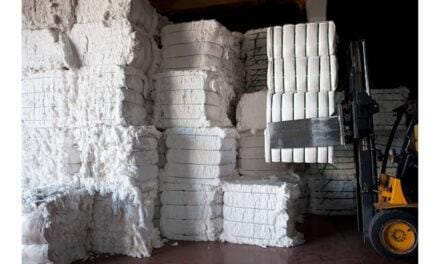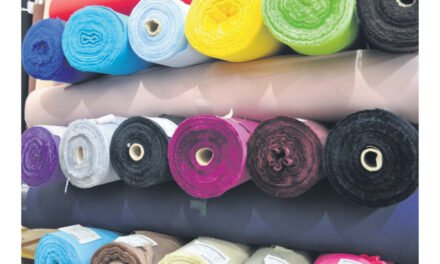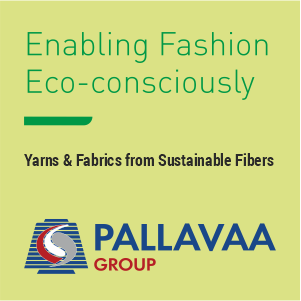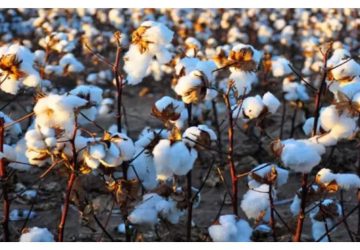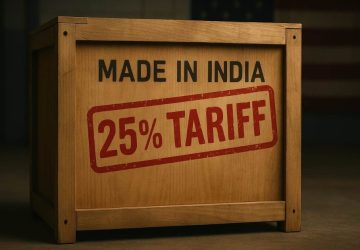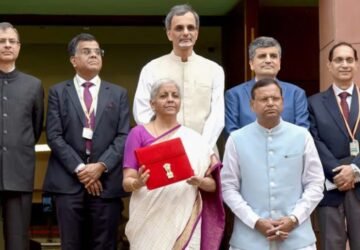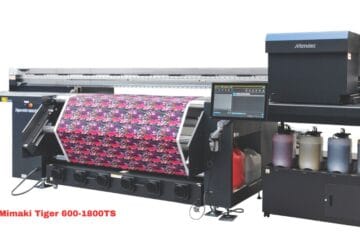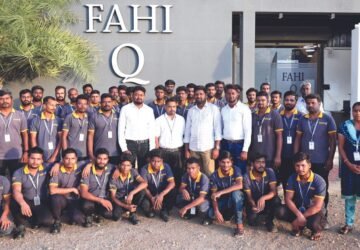
The Union Budget presented by Finance Minister Nirmala Sitharaman gave a big boost to the textile industry, announcing a 19% increase in the budget estimates for AY 2026-27. The BJP-led government allotted Rs 5272 crores to the Ministry of Textiles this year as compared to Rs 4417.03 crores in the Financial Year 2024-25. Additionally, the government has decided to boost cotton production and has announced a five-year Cotton Mission. Amid this, the government has decided to address the challenges of stagnant cotton productivity, especially extra-long staple varieties. Science and technology support will be provided to farmers under this mission. The mission will increase the farmers’ income and augment a steady supply of quality cotton.
Of the Rs 5272 crore allocated in the 2025-26 budget for the textile industry, Rs 635 crores will be used to upgrade the technology that is used by the textile industry under the Amended Technology Upgradation Fund Scheme (ATUFS). In addition to this, the finance minister further gave a boost to the industry by issuing a list of exempt pieces of machinery and looms used for textile production. ATUFS was founded in the year 2016 and is now also known by the names of the Modified Technology Upgradation Fund Scheme (MTUFS), Restructured Technology Upgradation Fund Scheme (RTUFS), as well as the Revised Restructured Technology Upgradation Fund Scheme (RRTUFS). The scheme aims to boost the ‘Make In India’ initiative and ease of doing business by promoting exports and job creation, particularly for women. It also aims to focus on zero effect and zero defect in manufacturing. The scheme also aims at reducing focus on imports from other countries, further encouraging improved quality in textile processing. In next few pages we are covering reactions from the industry leaders and major associations.

Dr. S K Sundararaman, Chairman, The Southern India Mills’ Association (SIMA)
The textile industry is the second largest employment provider of the nation, next only to agriculture that provides jobs predominantly to rural masses especially women to the tune of 110 million and the Government has set a vision of increasing the textile business size from the current level of USD 162 billion to USD 350 billion and the exports from the level of USD 35 billion to USD 100 billion by 2030. The NDA Government led by Hon’ble Prime Minister, Shri Narendra Modi having set a vision of 5Fs (Farm – Fibre – Factory – Fashion – Foreign) has been taking several pathbreaking initiatives to enhance the global competitiveness by addressing the structural issues. The Union Budget 2025-26 has again made few important announcements specific to textiles and several other announcements that would greatly benefit the textiles and clothing industry.
Dr. S K Sundararaman, Chairman, The Southern India Mills’ Association (SIMA) that represents the entire textile value chain in South India since 1933, has welcomed the budget and stated that the various announcements made in the budget would enhance the global competitiveness of the textile industry. He has stated that cotton being the growth engine and strength of Indian textile industry accounting around 80% of the textile exports, the industry has been demanding for a Cotton Technology Mission supporting high yielding seed technology, adoption of global best agronomy practices, producing clean cotton and branding Indian cotton to benefit the farmers and the industry.
The announcement of Rs.600 crores to improve productivity and sustainability of cotton, promote ELS cotton and best of science & technology to cotton farmer on a mission mode approach giving thrust for high yielding seeds to align with 5F Vision of Hon’ble PM is a step in right direction says SIMA Chairman. He has stated that the country was producing around 25 lakh bales of extra-long staple (ELS) cotton during 1980s when the crop was remunerative to the farmers and currently producing only around 5 lakh bales and the industry has potential to consume 30 lakh bales. He added that the industry is importing around 12 lakhs bales of ELS cotton having 32.5 mm and above and textile business size of the ELS cotton value chain is estimated at around Rs.60,000 crores per year and giving direct jobs to around 12 lakh people. He has pointed out that the value addition in the ELS cotton textile product is around ten times and has huge potential to boost export if the home-grown ELS cotton is made available.
SIMA Chief has stated that the Ministry of Agriculture and Ministry of Textiles have already been operating on a Special Project on cotton covering 15,000 hectares of land in all the leading cotton producing States focusing on High Density Planting and ELS cotton productivity improvements and the pilot projects have revealed that there is a scope to increase the productivity from 30 to 50 percent. He has added that at the initiative of Government, the Cotton Textile Export Promotion Council (TEXPROCIL) jointly with other employers organisations has already launched “Kasturi Cotton Bharat” and the high quality Indian cotton is getting branded.
SIMA Chairman has claimed that the predominantly MSME nature of textile industry would be benefited out of upward revision of MSME sales turnover criteria by two times the investment limit by 2.5 times and thereby become eligible to avail the various fiscal and non-fiscal supports extended for the MSMEs. He has added that the levy of 20% import duty or Rs.115/- per kg whichever is higher on knitted fabrics would curb the cheaper imports from China and other countries and increase the demand for fibres, yarns and fabrics produced indigenously. He has welcomed the extension of customs duty exemption on shuttlelesslooms, knitting, non-woven and garmenting machines including their parts, spares and accessories till 31.3.2027 from 31.3.2025 which would benefit the industry.
SIMA Chairman also welcomed the Export Promotion Mission facilitating easy access to export credit, cross border factoring support and support to tackle non-tariff measures such as sustainability and climate certifications, which would greatly benefit particularly the MSMEs. He has welcomed the various other announcements pertaining to credit guarantee scheme for MSMEs and the new mechanism for facilitating continuation of bank credit to MSMEs during their stress period, etc., skill development initiatives, infrastructure development schemes including maritime, non-conventional energy, power sector, etc.
Dr. Sundararaman has thanked the Hon’ble Prime Minister, Hon’ble Finance Minister, Hon’ble Agriculture Minister, Hon’ble Minister for Commerce and Industry and Hon’ble Minister for Textiles for the various announcements that would enhance global competitiveness.

Sudhir Sekhri, Chairman, Apparel Export Promotion Council (AEPC)
Reacting on the Union Budget 2025, Sudhir Sekhri, Chairman AEPC stated that, “The budget 2025-26 is inclusive, forward- looking and balanced. The budget shows the Government’s commitment towards export-led growth and inclusive approach, particularly for the generation of employment in the textiles and apparel export industry. It seeks to create a foundation for robust export growth encouraging innovation and competitiveness, particularly for the MSME sector.”
Further, Shri Sekhri noted that, “The measures announced in the budget will help the apparel sector compete globally by promoting 5 F vision and “Make in India, Make for the World”initiative driven by the Hon’ble Prime Minister” Ease in MSME financing, encouragement to farmers to produce extra- long staple cotton varieties, broad-basing skilling programme to spur employment, regulatory reforms and support to start-ups will surely accelerate growth.”
Mithileshwar Thakur, Secretary General AEPC, in his reaction to the Union Budget said, “The steps taken by the government towards establishment of Export Promotion Mission, creation of a unified digital platform BharatTradeNet to streamline export documentation and finance issues, support to MSMEs by facilitating easier access to credit by enhancing credit guarantee cover and setting up national centers of excellence for skilling etc. will drive India’s manufacturing and export growth story.” The budget will promote investment and growth through supportive policy reforms, he added.
Chairman AEPC Sekhri highlighted that some of the important measures announced in this budget include;
• Five-year mission for cotton productivity, providing major relief for cotton farmers faced with lower productivity. The mission will focus on the production of extra-long staple cotton varieties. Further, the government will provide the best of science and technological support to farmers. This will help in increasing the income of the farmers by ensuring a steady supply of quality cotton for rejuvenating India’s traditional textile sector.
• Conditional exemptions/concessional rate on BCD on import of select textile machinery parts and components, for use in manufacturing of textile machineries (as mentioned in S. No. 460, 460A, B, C, D, E of Customs Notification No. 50/2017-Customs dated 30th June, 2017), which was expiring on 31st March 2025, has now been extended till 31st March 2027.
• To boost the production of agro-textiles, medical textiles, and geo-textiles by making advanced machinery more affordable, two additional types of shuttle-less looms will now be fully exempted from import duties.
• Credit guarantee cover for micro enterprises will be raised from ₹5 crore to ₹10 crore, facilitating an additional ₹1.5 lakh crore in credit over the next five years.
• To achieve higher efficiencies of scale, technological upgradation and better access to capital to MSME sector, which accounts for around 80% of apparel export sector, the investment and turnover limits for classification of all MSMEs will be enhanced to 2.5 and 2 times respectively
• Support will be provided to MSMEs to tackle non-tariff barriers in exports, with an export promotion mission jointly led by the Commerce Ministry and MSMEs.
Emphasis on skill development and employability: Building on the initiative announced in the July 2024 Budget, five National Centres of Excellence for skilling will be set up with global expertise and partnerships to equip youth with the skills required for “Make for India, Make for the World” manufacturing. The partnerships will cover curriculum design, training of trainers, a skills certification framework, and periodic reviews.

Rakesh Mehra, Chairman, Confederation of Indian Textile Industry (CITI)
Confederation of Indian Textile Industry (CITI) welcomes the Union Budget 2025-26 which reflects the Government’s commitment to strengthening India’s textile and apparel sector. The budget witnessed the textile allocation increased significantly by 57.7% for 2025-26 compared to the revised budget of 2024-25. It is majorly due to increased allocation of Rs 1,148 crore under the PLI scheme for the current year.
Chairman CITI, Shri Rakesh Mehra thanked the Government for considering the long pending demand of industry and announcing the Mission for Cotton Productivity which will facilitate significant improvements in productivity and sustainability of cotton farming, and promote extra-long staple cotton varieties. “It will not only address the industry’s concern of declining cotton productivity but will also reduce our dependency on imports for specialized varieties of cotton-like ELS” he added.
He also commended the Government’s approach and said that the budget is aimed at a globally competitive and technology-driven textile sector. Various other Government initiatives like the revision of tariff items on knitted fabric categories to boost domestic industry, exemption of 2 more shuttle less looms from BCD to support technical textile industry, setting up of Export Promotion Mission, etc. will accelerate the sector’s growth towards a US$ 350 bn market size by 2030.
“It is heartening to note that the Government has a special focus on MSMEs, which account for more than 45% of our exports. Indian T&A industry also is majorly MSME-driven. The enhanced credit availability with guaranteed cover for MSMEs will definitely boost the confidence of MSMEs, however, the textile industry has been requesting a mix of an upfront capital subsidy and performance-based incentive scheme, especially for the MSME and such a scheme is needed for the targeted growth in this sector” cited Shri Mehra.
The introduction of a new tax regime is expected to increase disposable incomes, thereby enhancing domestic consumption of textile and apparel products. Shri Mehra emphasized that higher purchasing power will drive demand across various textile segments, benefiting both small and large industry players.
CITI remains optimistic that import-related relaxations, particularly the extended timelines for end-use compliance, will also be extended to products covered under Quality Control Orders (QCOs). This will help streamline supply chains and improve operational efficiency for the textile value chain.

Santosh Katariya, President, The Clothing Manufacturers Association of India (CMAI)
The Clothing Manufacturers Association of India (CMAI) has welcomed the Union Budget 2025-26, noting its potential to positively impact the textile industry. While no specific schemes have been introduced for the sector, CMAI President Santosh Katariya highlighted several key benefits that could support both production and consumption growth.
On the production side, measures aimed at MSMEs, particularly the Micro sector, are expected to provide a significant boost. Although detailed guidelines are awaited, the increase in various upper limits is a promising step. The launch of the Cotton Mission marks a major milestone for the industry, while initiatives to enhance export competitiveness, strengthen domestic manufacturing capacities, and improve ease of doing business are expected to drive growth. Additionally, the lowering of Basic Customs Duty on certain textile machinery will provide further impetus to the sector.
On the consumption front, the lowering of income tax across various levels is likely to increase disposable income, leading to greater consumer spending. Furthermore, revised TDS and TCS limits are expected to stimulate consumption, benefitting the textile and apparel industry.
Overall, CMAI views the Budget as a positive step for the industry, provided that its benefits are not counteracted by a rise in GST rates, particularly in the textile and apparel sector.
With a strong focus on manufacturing and consumption, the Budget 2025-26 sets a promising direction for the future of India’s textile industry.

Prabhu Dhamodharan, Convenor, Indian Texpreneurs Federation (ITF)
The Cotton Productivity Mission is a vital initiative to improve cotton yield in India from the current 450-500 kg per hectare to 1,000 kg per hectare. This five-year, time-bound mission, driven by advanced technology and scientific support, aims to boost farmer income and ensure raw material security for the Indian textile and apparel sector. Revisions in income tax slabs and exemptions are a positive step to boost consumption and economic growth. These measures, along with potential RBI rate cuts, will strengthen spending power and drive demand further.

Kumar Rajagopalan, CEO, Retailers Association of India (RAI)
Budget 2025 has delivered on several key expectations for the retail sector. The increase in income tax exemption to Rs. 12 lakh is a welcome relief for the industry that had witnessed reduced consumption in the past year. Better consumption means better business for retailers. The expansion of MSME benefits, including easier access to credit, customised credit cards, and the new Fund of Funds, should drive a wave of new products and innovations, increasing supply and competition in the market.
Ease of doing business has been a key focus, with regulatory simplifications and the push for state-level reforms expected to improve the retail environment. Gig worker recognition, with e-Shram ID cards and health cover, will support the growing omnichannel retail ecosystem by strengthening last-mile delivery and digital commerce.
Industry-specific measures, including support for the footwear, leather, toys, and electronics sectors, will help these industries scale up. Women workers in retail will benefit from initiatives like working women’s hostels and crèches, making workforce participation easier.
Overall, this is a progressive, growth-driven budget that strengthens retail, empowers businesses, and prioritises consumption as a key driver of economic momentum.

Dr. A. Sakthivel, Chairman, Apparel, Made-Ups & Home Furnishing Sector Skill Council (AMHSSC)
We wholeheartedly commend the Government of India, under the leadership of Honorable Prime Minister Narendra Modi, for presenting a visionary and impactful Union Budget 2025-26. This budget clearly demonstrates a strong commitment to inclusive growth, prioritizing employment generation, skill development, social justice, and a robust manufacturing sector. It is particularly encouraging to see the focus on youth, women, and farmers, recognizing their crucial role in nation-building.
The announcements made by Finance Minister Nirmala Sitharaman resonate deeply with the needs and aspirations of the apparel industry and the broader skill ecosystem. The establishment of the Export Promotion Mission is a game-changer. The initiatives outlined within this mission, specifically the improved access to credit for exporters, especially MSMEs, and the introduction of the ‘Bharat Trade Net’ platform, will significantly streamline our export processes. These measures will not only reduce hurdles but also enhance transparency and efficiency, making Indian apparel exports more competitive globally. The simplification of export documentation will be a boon for smaller players, allowing them to participate more actively in international trade.
The emphasis on boosting cotton productivity and sustainability through a dedicated mission, aligning with the Hon’ble PM’s 5F vision, is a welcome step. This focus on ELS cotton and the integration of science and technology will strengthen the very foundation of our industry, improving the quality and availability of raw materials.
The creation of five National Centers of Excellence for skilling, with global expertise and partnerships, is a transformative initiative. These centers will play a pivotal role in equipping our youth with the cutting-edge skills needed for “Make for India”.

Rajeev Gupta, CEO, RSWM Ltd.
“The Union Budget for FY 2025-26 introduces key reforms to promote domestic production of technical textile products such as agro textiles, geo textiles and medical textiles at competitive prices. The inclusion of two more shuttle-less looms in the list of fully exempted textile machinery is a progressive step toward expanding production capacity in textile manufacturing. The government’s emphasis on Atmanirbharta through increased indigenous textile production aligns well with the proposed revision of the Basic Customs Duty (BCD) rate on knitted fabrics across nine tariff lines—from 10% or 20% to 20% or ₹104 per kg, whichever is higher. The government’s commitment to providing technical and R&D support for cotton farmers under the 5 years mission is a welcome move. This initiative is expected to improve cotton farming efficiency and promote diverse cotton varieties.”

Vinay Thadani, CEO, Vishal Fabrics Limited
The Union Budget 2025-26 sets a transformative course for India’s textile industry, highlighting a commitment to strengthening manufacturing and boosting exports. Key initiatives, such as the Mission for Cotton Productivity, promise to revolutionize cotton farming, enhancing quality and sustainability. This will have a direct positive impact on the textile sector, ensuring a steady supply of raw materials for domestic manufacturers. Additionally, the introduction of ‘BharatTradeNet’ (BTN) provides a unified platform to streamline trade documentation and financing, ensuring smoother integration with global supply chains. With increased investment limits for MSMEs and a simplified tax regime, the budget paves the way for growth and competitiveness. The support for textile exports through export credit, cross-border factoring, and regulatory enhancements will foster international market penetration.

Sanjay Jain, Group Chief Executive Officer, PDS Ltd.
Union Budget 2025 has placed a great impetus on boosting the national manufacturing for small, medium, and large industries; the domestic textile industry will be benefited with this move. In line with Viksit Bharat strategy, PDS recently acquired 55% stake in Knit Galley India Pvt Ltd. Our aim is to enhance our manufacturing capabilities in India while leveraging it to drive greater sourcing opportunities.
We are also pleased with the inclusion of enhancing Extra Long Staple (ELS) Cotton Productivity in the Union Budget 2025’s five-year mission. This move will foster production of superior quality raw material for the textile industry, strengthen India’s traditional textile sector, boost exports, and reduce dependency on imports.
We hope that the new reforms towards boosting national manufacturing, spotlights India’s capabilities as an international manufacturing hub. At PDS, we are equally committed to the Make in India initiative and advancing the future of sustainable manufacturing.

Amar Nagaram, Co-Founder & CEO, VIRGIO
The Union Budget’s focus on fostering innovation, empowering MSMEs, and strengthening India’s digital economy is a step in the right direction. The ₹500 crore allocation to deep-tech and AI innovation will be instrumental in driving AI-led advancements and data-driven solutions, enabling businesses to scale efficiently. The Rs. 20,000 crore investment in innovation, along with the establishment of a Deep Tech Fund, will play a pivotal role in accelerating the adoption of next-generation production technologies. Furthermore, the five-year Mission for Cotton Productivity will strengthen a powerful, proplanet, and premium raw material supply chain. Incentives for sustainable manufacturing and circular economy initiatives validate the growing shift towards responsible fashion. The significant enhancement of credit availability with guarantee cover for start-ups will provide crucial support for emerging businesses, while also generating employment opportunities. A progressive policy framework that supports startups will accelerate India’s journey to becoming a global hub for innovation and conscious consumption.

Ritesh Khandelwal, Co – Founder, ZYOD
This budget brings a much-needed boost for MSMEs, making it easier for small businesses to access credit and scale up. Expanding the credit guarantee cover for MSMEs, increasing investment and turnover limits, while introducing customised credit cards for micro-enterprises will provide vital financial support. Coupled with other positive developments like the National Manufacturing Mission, these developments will accelerate growth, foster innovation, and generate employment. At the same time, the push for skill development through the National Centres of Excellence and global collaborations will empower our youth with the capabilities to compete and succeed on the world stage.

Pawan Gupta, CEO & Co-Founder, Fashinza
The recent tax breaks in the textile sector should serve as a catalyst for boosting domestic consumption, which, in turn, will have a direct and positive impact on the manufacturing industry. By making textile products more affordable and competitive in the domestic market, these incentives will encourage higher demand, leading to increased production, job creation, and overall economic growth. This is particularly crucial for India, where the textile sector plays a significant role in employment generation and exports.
However, beyond tax incentives, the long-term success of the textile industry hinges on the effective implementation of previously announced government initiatives, particularly the PM MITRA (Mega Integrated Textile Region and Apparel) parks. These parks, designed to enhance scale, efficiency, and infrastructure, are expected to transform India’s textile manufacturing ecosystem by promoting end-to-end production capabilities, from raw material processing to final product exports. Their successful execution can significantly strengthen India’s position as a global textile hub, reducing dependency on imports and fostering a self-sufficient, competitive industry.
While tax relief provides immediate benefits, sustained progress in infrastructure development, innovation, and policy execution will be the true game-changer for the textile sector in 2025 and beyond.

Mihir V Shah, Executive Director, Vipul Organics Limited
It is a fabulous budget with the focus on meeting the aspirations of the booming middle class. The Manufacturing Mission that the Hon’ble minister has set up will further the cause of Make in India and boost domestic manufacturing. Extending the Credit Guarantee Scheme for facilitating term loans for purchase of machinery and equipment without collateral or third party guarantee, to the MSMEs for up to Rs. 100 cr, is a welcome step and will ease the credit requirements of the sector. Structural reforms that focus on ease of doing business, especially with regards to time limit for Provisional assessments and TCS/TDS compliances are also a welcome step.

Jayanth Kashyap, Investment Lead, Good Fashion Fund
The Finance Minister’s vision for accelerating growth through investment in people, innovation, and sustainable manufacturing is a welcome step for the textile and apparel sector. The Rs. 20,000 cr investment in innovation and the establishment of a Deep Tech Fund will be instrumental in driving the adoption of next-gen technologies. This, combined with the five-year Mission for Cotton Productivity, will ensure a resilient, sustainable, and high-quality raw material pipeline—critical for advancing responsible fashion. Additionally, the Saksham Anganwadi and Poshan 2.0 initiative reinforces the need for human capital development, ensuring long-term economic resilience. At Good Fashion Fund, we remain committed to supporting manufacturers in India’s textile ecosystem by facilitating access to capital for sustainable and disruptive production solutions, aligning with India’s ambition to become a global hub for sustainable fashion.


